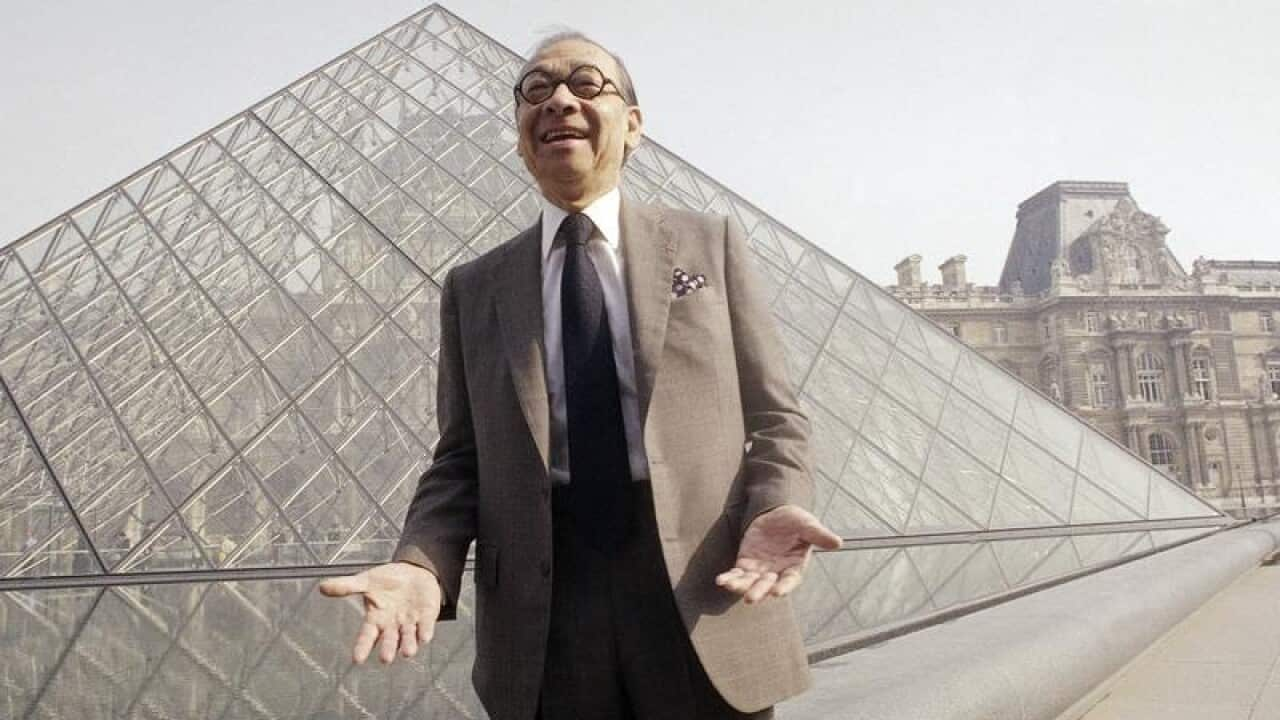I M Pei, the versatile, globetrotting architect who revived the Louvre with a giant glass pyramid and captured the spirit of rebellion at the multi-shaped Rock and Roll Hall of Fame, has died at age 102.
His buildings added elegance to landscapes worldwide with their powerful geometric shapes and grand spaces. Among them are the striking steel and glass Bank of China skyscraper in Hong Kong and the Fragrant Hill Hotel near Beijing.
His work spanned decades, starting in the late 1940s and continuing through the new millennium.
Pei painstakingly researched each project, studying its use and relating it to the environment. But he also was interested in architecture as art - and the effect he could create.
"At one level my goal is simply to give people pleasure in being in a space and walking around it," he said.
"But I also think architecture can reach a level where it influences people to want to do something more with their lives. That is the challenge that I find most interesting."
His big break was in 1964, when he was chosen over many prestigious architects, such as Louis Kahn and Ludwig Mies van der Rohe, to design the John F. Kennedy Memorial Library in Boston.
Some of his designs were met with much controversy, such as the 22-metre faceted glass pyramid in the courtyard of the Louvre museum in Paris.
Many of the French vehemently opposed such a change to their symbol of their culture, once a medieval fortress and then a national palace. Some resented that Pei, a foreigner, was in charge.
No challenge seemed to be too great for Pei, including the Rock and Roll Hall of Fame, which sits on the shore of Lake Erie in downtown Cleveland, Ohio. Pei, who admitted he was just catching up with the Beatles, researched the roots of rock'n'roll and came up with an array of contrasting shapes for the museum.
Pei officially retired in 1990 but continued to work on projects.
Ieoh Ming Pei was born April 26, 1917, in Canton, China, the son of a banker. He later said, "I did not know what architecture really was in China. At that time, there was no difference between an architect, a construction man, or an engineer."
Pei came to the United States in 1935 with plans to study architecture, then return to practice in China. However, World War II and the revolution in China prevented him from coming back.
During the war, Pei worked for the National Defense Research Committee. As an "expert" in Japanese construction, his job was to determine the best way to burn down Japanese towns. "It was awful," he later said.
Pei established his own architectural firm in 1955, a year after he became a US citizen. He remained based in New York City.
Pei's wife, Eileen, who he married in 1942, died in 2014. A son, T'ing Chung, died in 2003. Besides sons Chien Chung Pei and Li Chung Pei, he is survived by a daughter, Liane.

